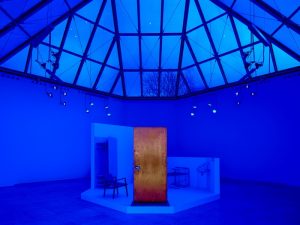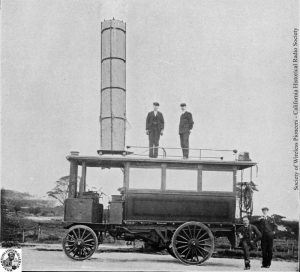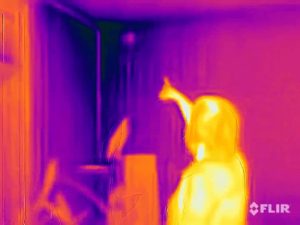As part of the exhibition on Apartheid, the courtyard of CCCB in Barcelona is occupied by a thought-provoking installation by Johannesburg artist Jane Alexander. “Control of Arrivals” is an area closed off by high tanks, razor wire and surveilled by with watch towers. Inside are pale, long creatures who look half-human, half-animal.
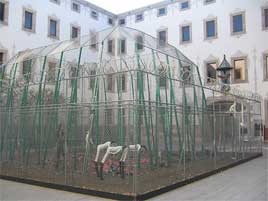
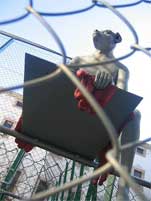
The installation is based on Melilla‘s border fence, a barrier between Morocco and the Spanish city of Melilla.
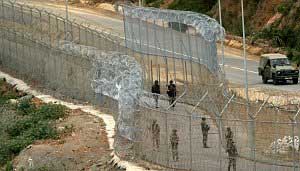 Constructed by Spain, its stated purpose is to rein in the influx of immigrants to the Spanish enclave and, therefore, to the European Union. There is considerable pressure by African refugees to enter Melilla, a part of the European Union. Although the border fence is a six-meter-tall double fence with watch towers, refugees frequently manage to cross it illegally, avoiding the attempts by Spanish police to take them back to their home countries. Detection wires, tear gas dispensers, radar, and day/night vision cameras are planned to increase security and prevent illegal immigration.
Constructed by Spain, its stated purpose is to rein in the influx of immigrants to the Spanish enclave and, therefore, to the European Union. There is considerable pressure by African refugees to enter Melilla, a part of the European Union. Although the border fence is a six-meter-tall double fence with watch towers, refugees frequently manage to cross it illegally, avoiding the attempts by Spanish police to take them back to their home countries. Detection wires, tear gas dispensers, radar, and day/night vision cameras are planned to increase security and prevent illegal immigration.
Beyond this reference, the installation can also be seen as a comment on the ever more rigid mechanisms of separation, discrimination and control extensively set in place by politically and economically dominant countries over the majority of the world. “Europe uses tanks to stop those coming from the South reaching the continent, while building motorways for those who come from the North”, wrote Josep Ramoneda in the exhibition catalog.
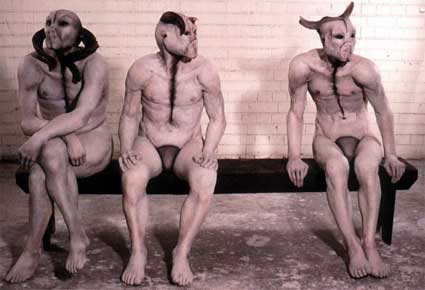
Jane Alexander has created a fascinating body of works, the most famous of them being The Butcher Boys (1985/86), three lifesize humanoid-like beasts whose figures seem to be devoid of their outside senses – their ears are nothing more than holes in their heads and their mouths appears to be covered with thick roughened skin.
I took some pictures fo the installation and there are some images from the show on here and on the cccb website. Picture of border fence from 20 minutos.


